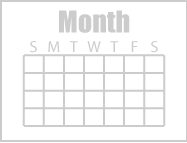| Lyrids Meteor Shower April 22, 2024 ⬅︎ |
 |
The Ancient One
The Lyrids are ancient. The oldest known record of any meteor shower comes from 687 BCE when a Chinese stargazer wrote about the Lyrids, “at midnight, the stars fell like rain.”
The Lyrids are the second major meteor shower of the year, occurring more than three months after the Quadrantids. While the Quadrantids are intense, dim and challenging, the Lyrids are far less strong, but brighter and easier to see.
This shower is active from around April 15 to 29 with a peak that lasts about three days. Look below for the date of the peak for this year. The rate at the peak is moderate with about 18 meteors per hour. This can vary a bit from year to year (10-25), with a surprising burst of activity in some years (100+). Because of their average speed, the meteors tend to be moderately bright — about the brightness of Polaris, the North star (magnitude +2.0) — but there can be occasional trains (smoky trails) and brilliant fireballs.
Technically, the shower's radiant is in the constellation Hercules, just across the border from Lyra. So shouldn't this shower be called the Herculids? This shower was named before the boundaries of constellations were clearly defined, and with the radiant so close to the bright star Vega in Lyra, naming this shower the Lyrids made sense.
Comet Thatcher is believed to be the source of the material for this shower. It is a long period comet, taking 415 years to orbit the Sun. It is expected to return in 2283.
| Dates |
Rate |
Speed |
Radiant |
Parent |
2024 Peak |
| Apr 15 - 29 |
18 |
30 mi/s |
Hercules |
Comet Thatcher |
Apr 22/23 |
|
| Viewing Lyrids Meteor Shower | | Level | Easy | Rating |  | Best Viewing | Night of April 22/23 | | Find | To find the radiant, first find Vega in the NE. Then look about 7° W (see above). In the Starry Hill region, the radiant rises in the northeastern sky about 9 PM and then rises throughout the night.
|  | In general with meteor showers, the best viewing begins after midnight and improves each hour until just before dawn.
|  | For 2024, some bad news is that there will be a bright waxing gibbous moon rising at 7:11 PM that will interfere with the shower the whole evening and night. This will make viewing any but the brightest of meteors very difficult. |
|
| More info: All about Shooting Stars, Meteors and Meteor Showers
|



